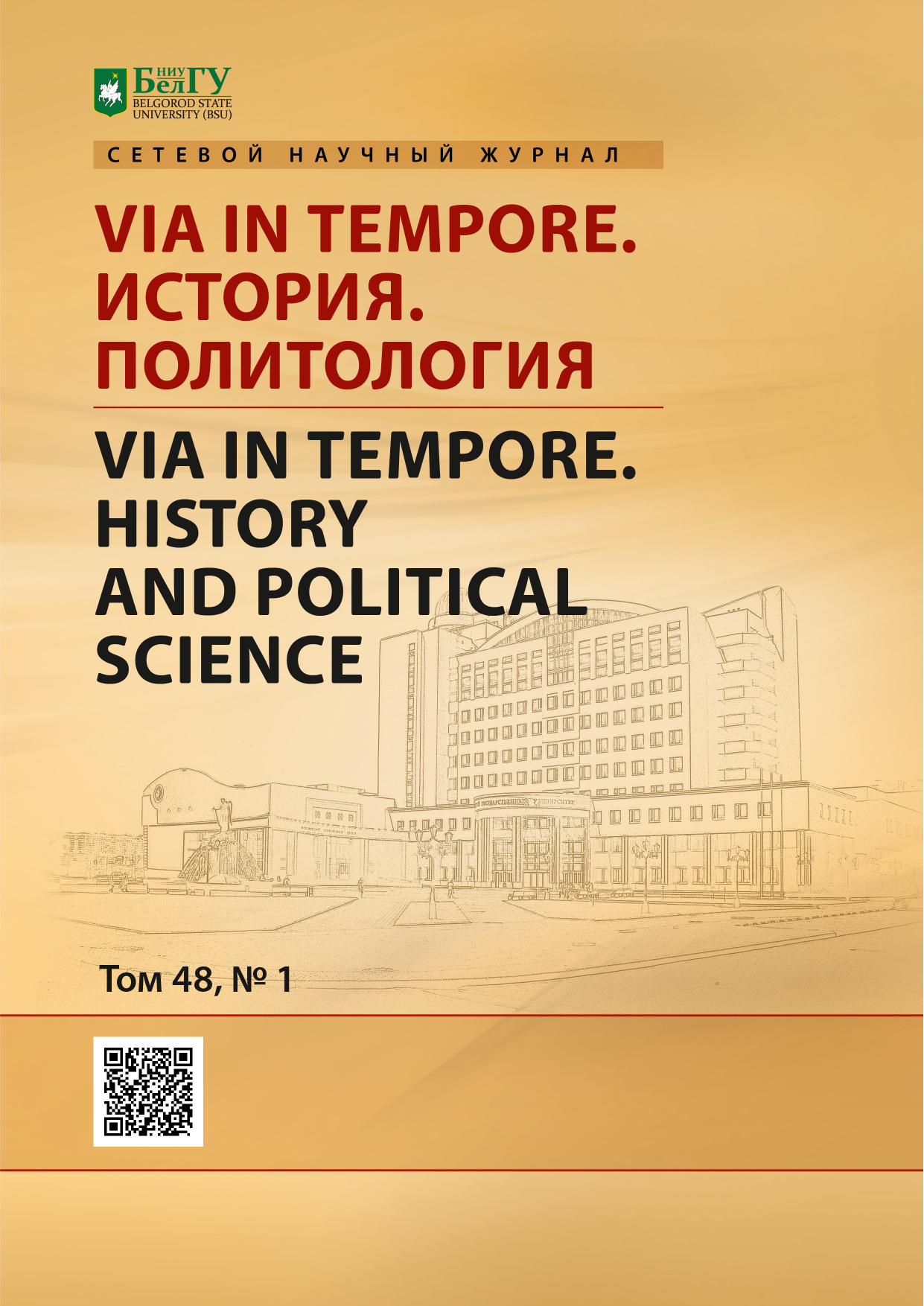Early Byzantium and gender research: challenges and prospects (about the book: Bolgov N.N. From hetaera to abbess. Woman in Early Byzantium: the world of the senses and the life of the body. M., 2020)
DOI:
https://doi.org/10.52575/2687-0967-2021-48-1-117-122Keywords:
gender studies in history, Early Byzantium, Late antiquity, review, Russian Byzantine studiesAbstract
This work examines a range of problems related to gender studies in the history of Early Byzantium. The impetus for the article was the publication in 2020 of the popular science book by N.N. Bolgov «From hetaera to abbess. Woman in Early Byzantium: the world of the senses and the life of the body». It is noted that such a direction of research has not yet developed in Russian historiography. Actually, in general, very few specialists deal with the history of Early Byzantium as the main problematic. Meanwhile, this transitional period in recent decades has become the object of close attention from numerous scientists, and the number of publications has become explosive. There is also a clearly expressed gender direction in the study of the history of Late Antiquity – Early Byzantium. The book of N.N. Bolgov, who has undoubted merit in terms of drawing attention to this issue, should also serve as a stimulus for the development of research of this kind in Russian Byzantology and, no less important, is addressed to the general reader and young audience. The author managed to choose a correct and respectful intonation within the framework of secular science when addressing topics related to religious tradition.
Downloads
References
Болгов Н.Н. 2020. От гетеры до игуменьи. Женщина в Ранней Византии: мир чувств и жизнь тела. М., Ломоносов, 208.
Репина Л.П. 2001. Гендер в истории: проблематика и методология исследований. В кн.: Теория и методология гендерных исследований. М., МЦГИ/МВШСЭН: 351–365.
Рудаков А.П. 1996. Очерки византийской культуры по данным греческой агиографии. СПб., Алетейя, 288.
Arjava A. 1996. Women and Law in Late Antiquity. Oxford, Clarendon Press, 338.
Cameron Av., Kuhrt A. (ed.). 1993. Images of Women in Antiquity. Detroit, Wayne State univ. Press/Routledge, 356.
Castelli E. 1991. «I Will Make Mary Male»: Pieties of the Body and Gender Transformation of Christian Women in Late Antiquity. In: Body guards: The cultural politics of gender ambiguity, Jan 1. New York, Routledge: 29–49.
Castelli E.1986. Virginity and its Meaning for Women’s Sexuality in Early Christianity. In: Journal of Feminist Studies in Religion. 2–1: 61–88.
Castelli E. 2001. Women, Gender, Religion: A Reader. Edited with the assistance of Rosa-mond C. Rodman. New York, Palgrave/St. Martin’s Press, 550.
Cloke G. 1993. Women in Late Antiquity. Pagan and Christian Life-styles. Oxford, Claren-don Press, 158.
Galatariotou C. 1984–1985. Holy Women and Witches: Aspects of Byzantine Conceptions of Gender. In: Byzantine and Modern Greek Studies. Vol. 9: 55–94.
Garland L. 2006. Byzantine Women: Varieties of Experience 800–1200. London, Ashgate, 226.
Harvey S.A. 1990. Women in Early Byzantine Hagiography: Reversing the Story. In: Wom-en’s Strength: historical perspectives on women in Christianity. Ed. by L.L. Coon, K.J. Haldane, E.W. Sommer. Charlottesville, Univ. Press of Virginia: 46–50.
Koukales P. 1947–1957. The Private Life of the Byzantines [Byzantinon bios kai politis-mos]. 8 vols. Athens: Institut Francais.
Laiou A.E. 1992.Gender, Society and Economic Life in Byzantium. Brookfield, Variorum Coll. Studies, 268.
Laiou A.E.1993. Sex, Consent and Coercion in Byzantium. In: Consent and Coercion to Sex and Marriage in Ancient and Medieval Societies. Ed. A.E. Laiou. Washington, D. C.: 109–221.
Laiou A.E. 1981. The Role of Women in Byzantine Society. In: Jahrbuch der Österreichi-schen Byzantinistik. Bd. 31,1: 233–260.
Patlagean E. 1976. L’histoire de la femme déguisée en moine et l’évolution de la sainteté féminine à Byzance. In: Studi Medievali. Ser. 3. Vol. 17: 597–625 (in French).
Vogt K. 1995. «The Woman Monk»: a Theme in Byzantine Hagiography. In: Greece & Gender. Ed. by B. Berggreen, N. Marinatos. Bergen, Norwegian Institute at Athens: 141–148.
Webb R. 2002. Female Performers Entertainers in Late Antiquity. In: Greek and Roman Ac-tors: Aspects of an Ancient Profession. Ed. P. Easterling, E. Hall. Cambridge, Cambridge University Press: 282–303.
Webb R. 1997. Salome’s Sisters: the Rhetoric and Realities of Dance in Late Antiquity and Byzantium. In: Women, Men and Eunuchs: Gender in Byzantium. Ed. L. James. London; New York, Routledge: 119–148.
Abstract views: 489
Share
Published
How to Cite
Issue
Section
Copyright (c) 2021 Via in tempore. History and political science

This work is licensed under a Creative Commons Attribution 4.0 International License.


